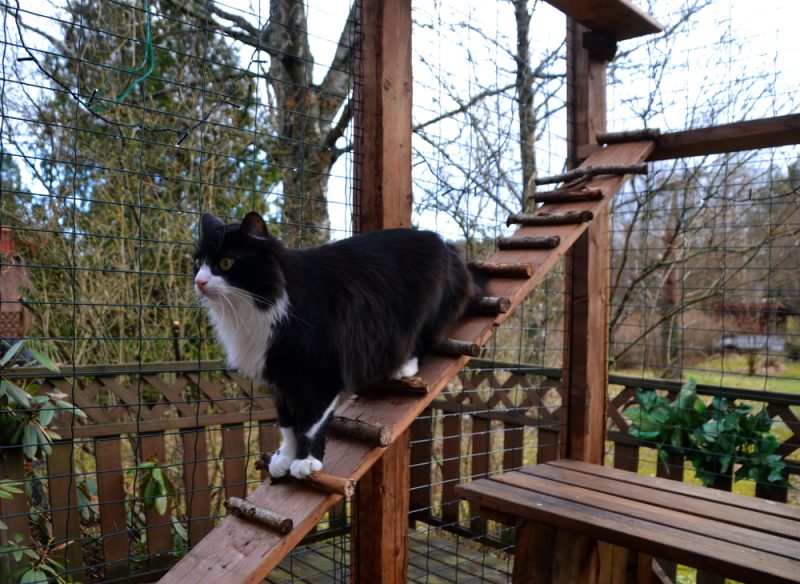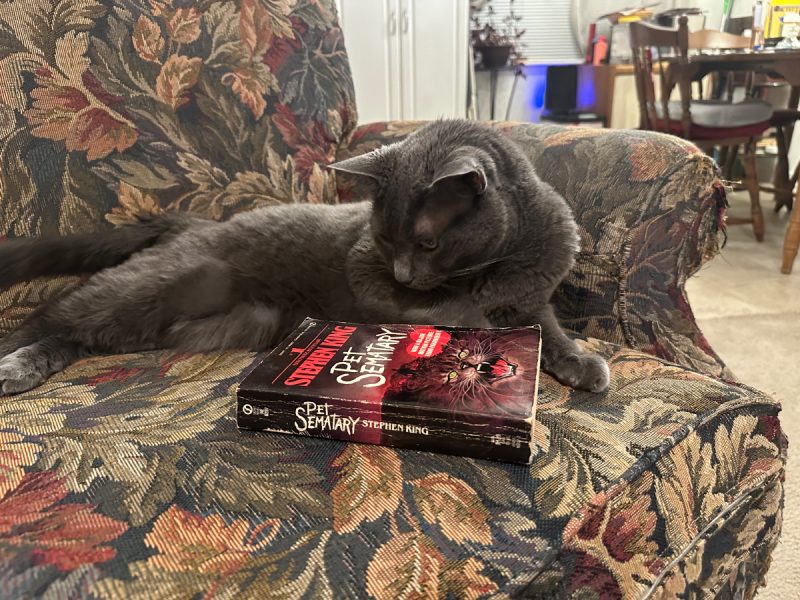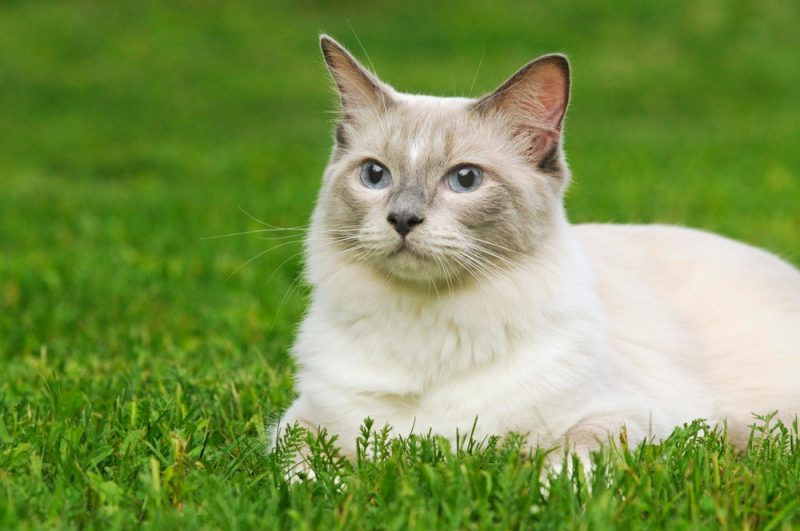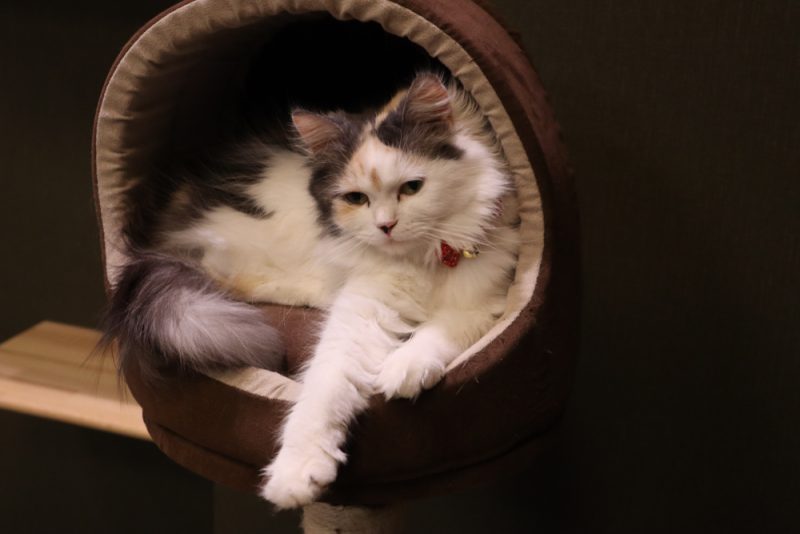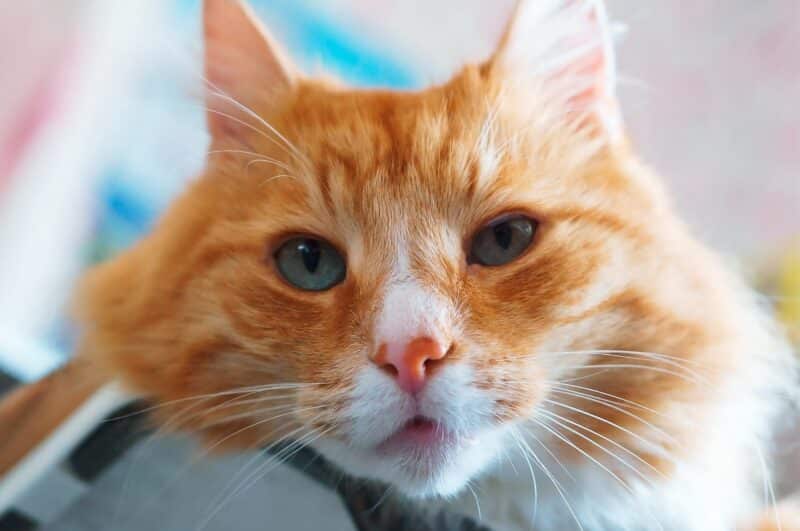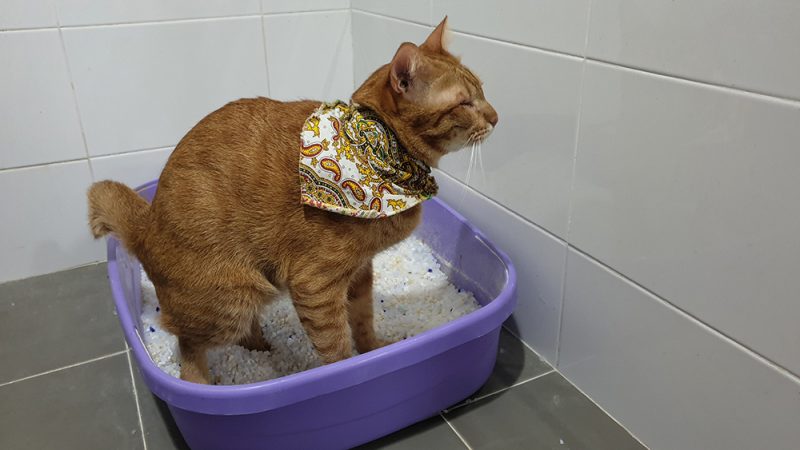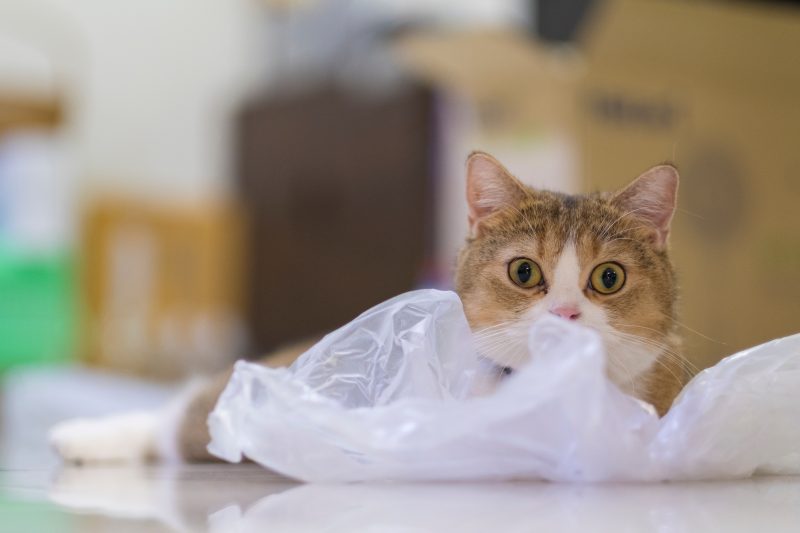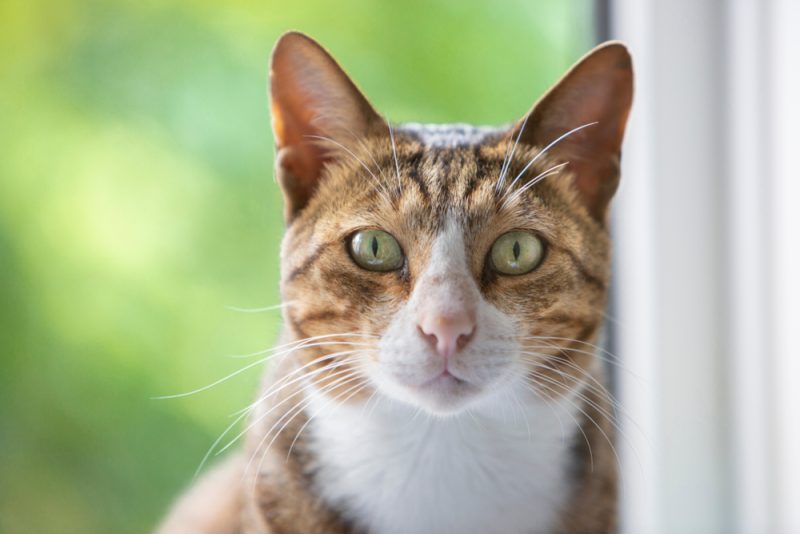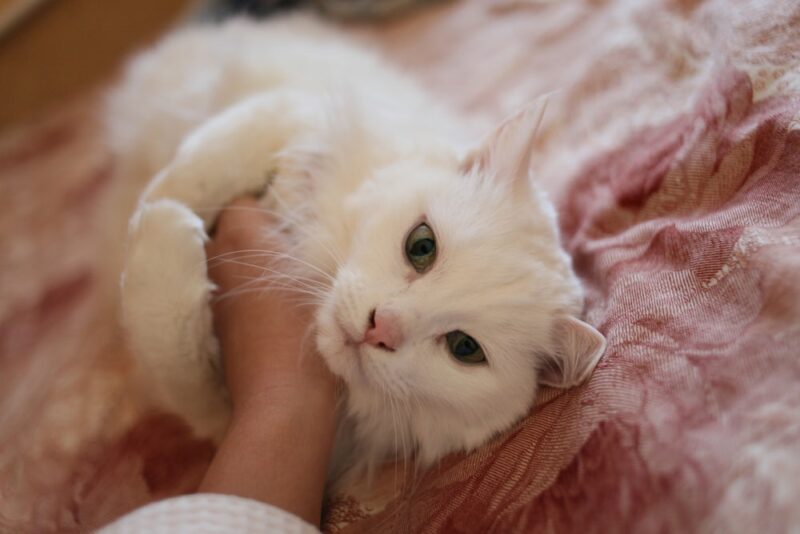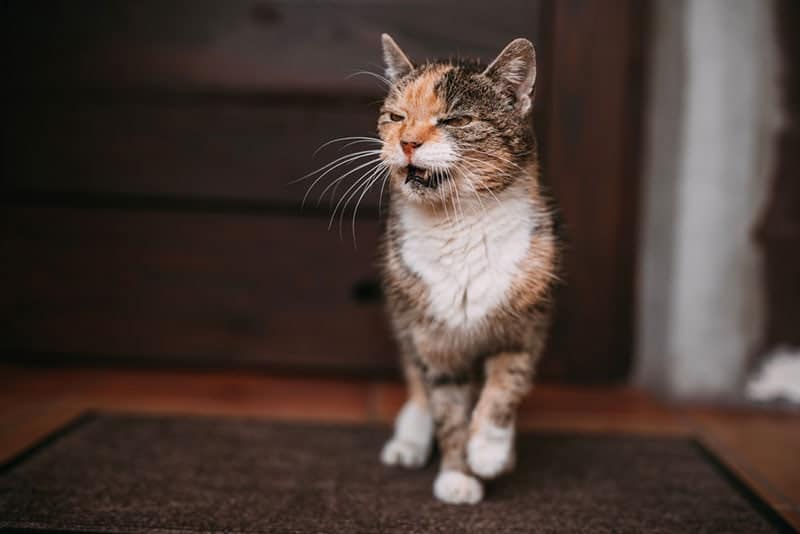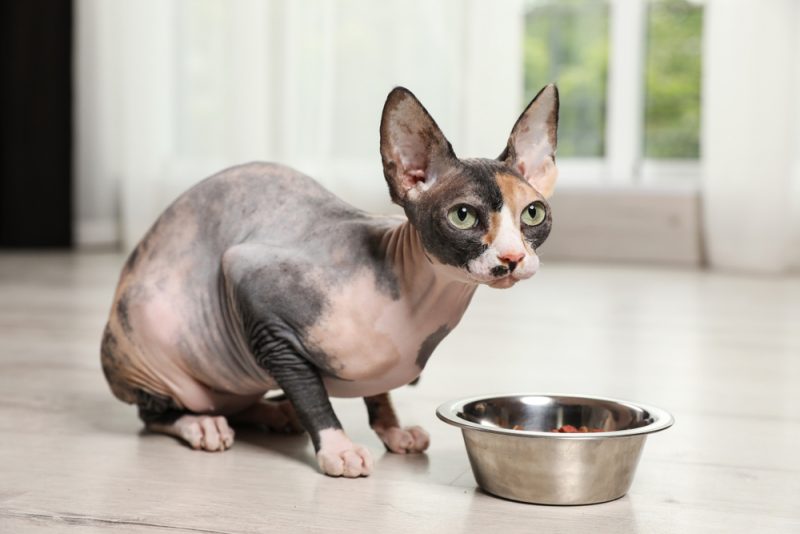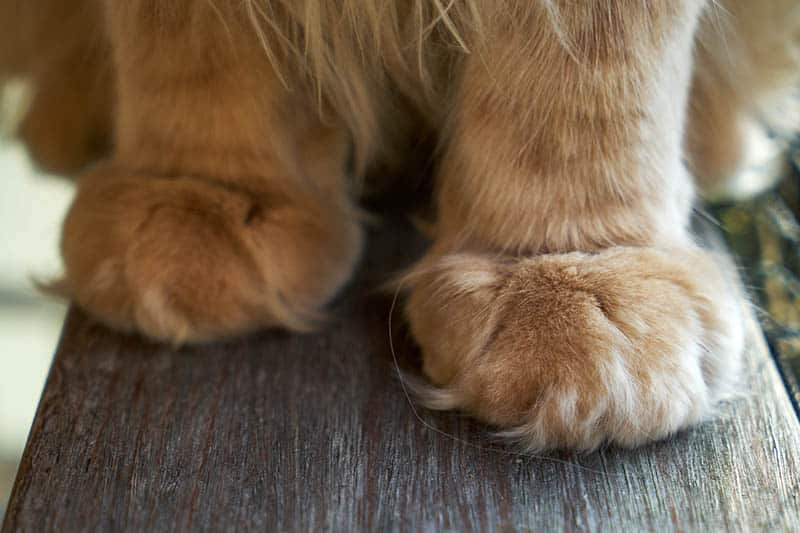Many of us keep our cats indoors for safety reasons, but it’s also nice to enrich their lives by allowing them outside to enjoy the fresh air. Building an outdoor cat enclosure is the perfect solution. Your cat is safe from predators (or being the predator), but they can still spend time outside in an enclosed environment.
We’ve reviewed several designs, referred to adorably as “catios,” and rounded up our top DIY catio plans. From large enclosures with tunnels and platforms to small enclosures that sit next to a window, you will learn how to build the ideal catio for your furry friend.

The 15 Free DIY Catio Plans
1. All-Season Outdoor Cat Habitat by Instructables
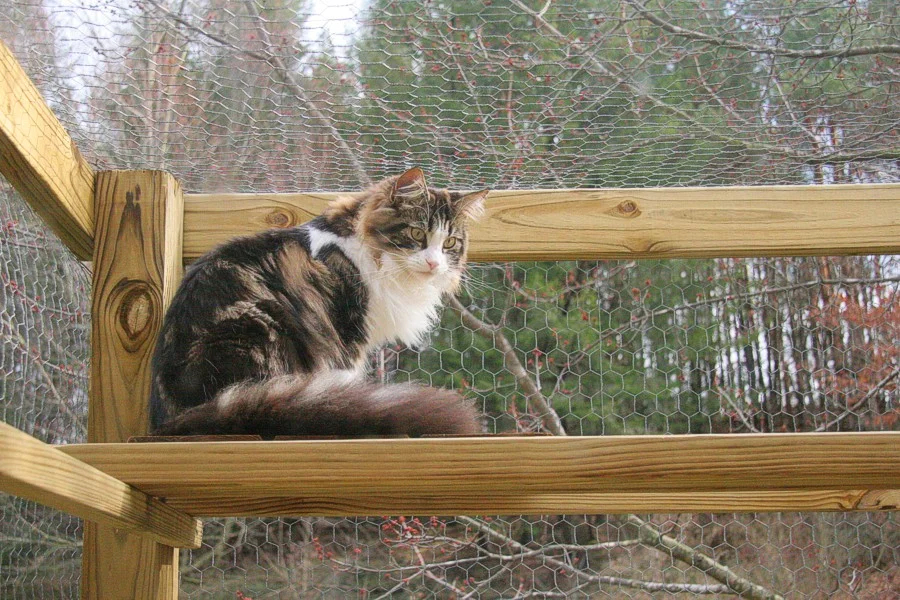
| Skill Level: | Medium |
- Pressure-treated lumber of various sizes
- Concrete mix
- Deck screws
- Chicken wire
- Staples
- Circular saw
- Drill
- Jigsaw
- Power stapler
- Wire cutters
- Screwdriver
If you’re looking for an all-season catio design that provides plenty of space for your indoor cat to enjoy the fresh air and warm sun, this is an excellent choice from Instructables. The step-by-step tutorial is very detailed, which is always a bonus.
You can include a raised decking area for your cats to sit on, plus shaded sections. This enclosure is designed to sit flush with your house so your cats can go in and out as they please.
2. Cuckoo 4 Design Easy DIY Cat Enclosure
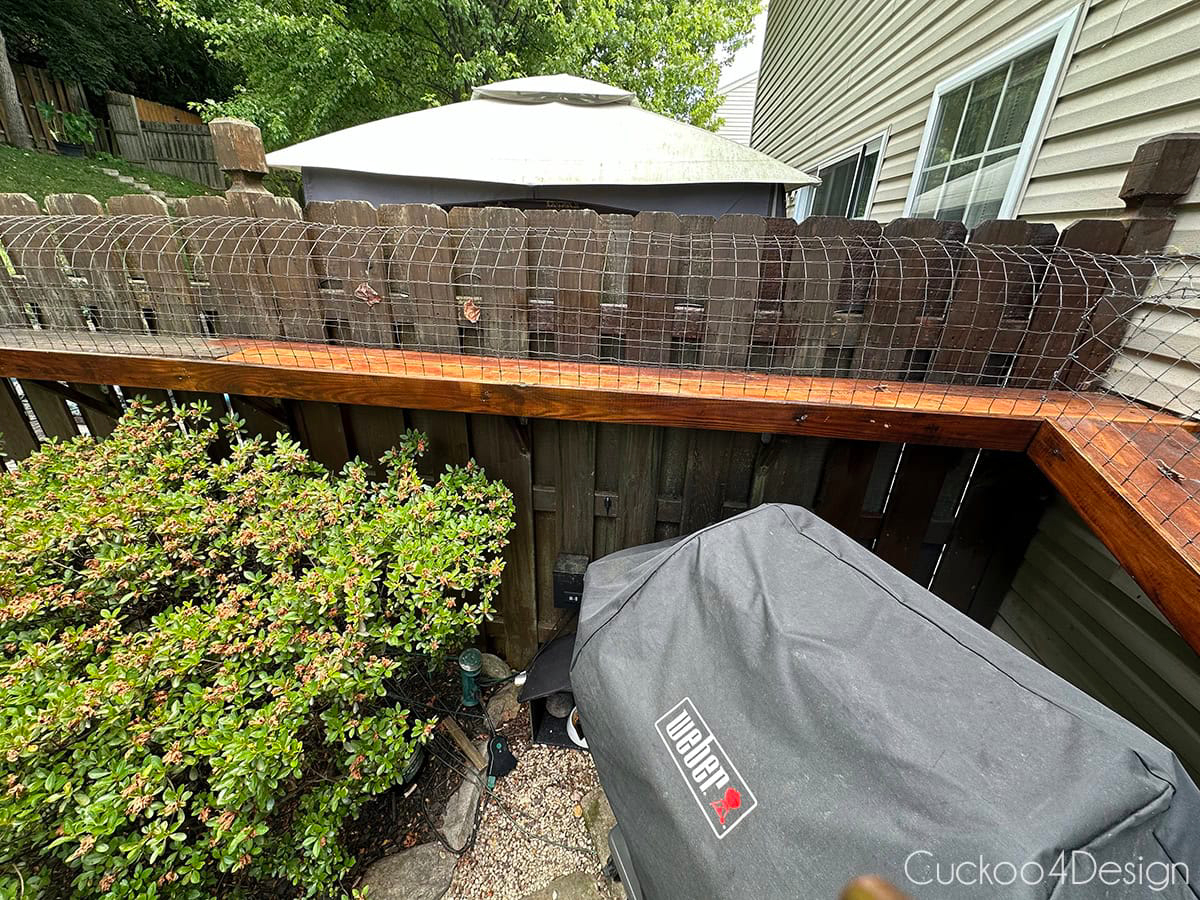
| Skill Level: | Advanced |
- Pressure-treated lumber
- Cedar planks
- Galvanized mesh
- Screws
- Brackets
- Nails
- Wood stain
- Staples
- Power drill
- Staple gun
- Saw
- Measuring tape
This awesome enclosure by Cuckoo 4 Design includes a window platform and raised tunnel, leading to a larger enclosure set away from the house. Your indoor cat can have a lot of fun here!
You can easily adapt this catio plan to suit a range of different-sized outdoor spaces since the tutorial doesn’t specify dimensions for your shelter.
3. Window Box Cat Enclosure From Kori at Home
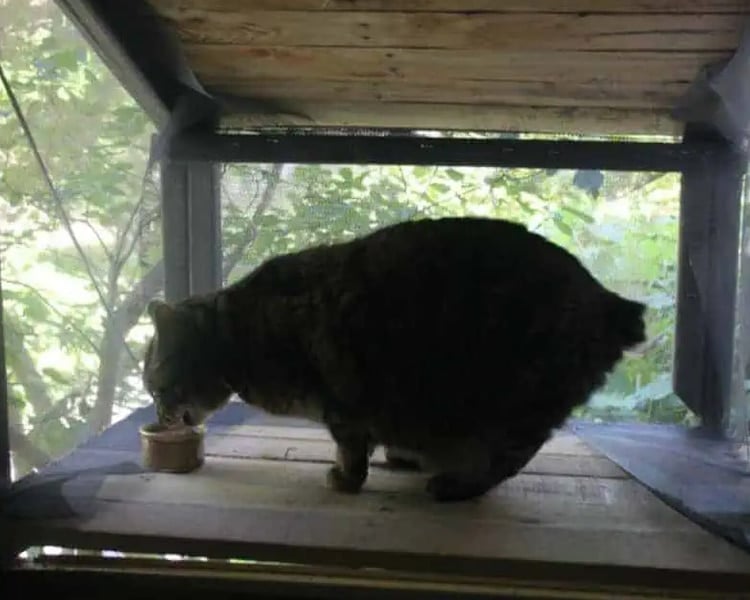
| Skill Level: | Medium |
- Lumber of various sizes
- Roofing nails
- Roofing shingles
- Felt underlay
- Hammer
- Tape measure
- Gloves
If you don’t have a backyard or would prefer a smaller enclosure, this window box enclosure from Kori at Home is a perfect choice.
It sits against one of your windows and provides the perfect spot for your cat to catch some rays. As a plus, you can use reclaimed pallet wood as the frame.
4. Catio from This Old House
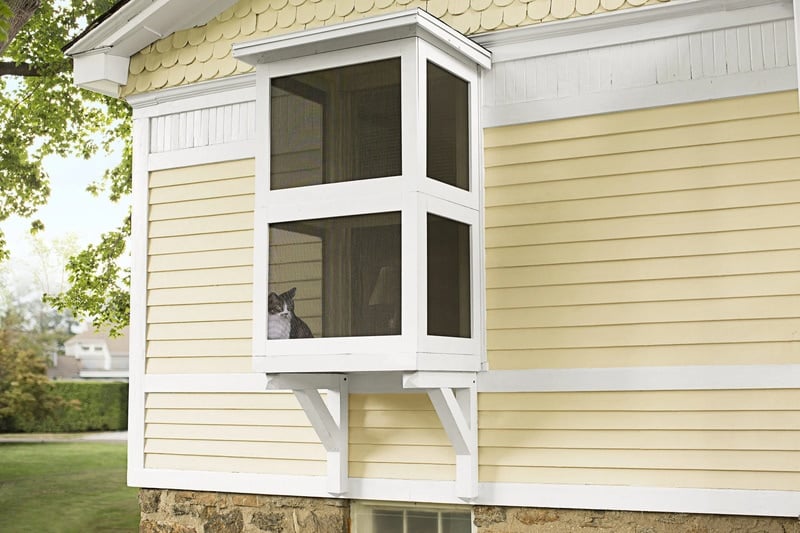
| Skill Level: | Medium |
- Cedar lumber
- Roll roofing
- Plywood
- Screen
- Ladder
- Pencil
- Paint rollers and brushes
- Miter saw
- Tape measure
- Tin snips
- Utility knife
- Staple gun
- Caulk gun
- Drill
- Jigsaw
- Circular saw
- Chisel
- Hammer
- Level
- Clamps
This stylish catio plan from This Old House is designed to integrate with your house seamlessly and can be completed in 2 days. There’s a detailed step-by-step tutorial, and you can also download the plans, including a cut list.
5. Bookshelf Catio by Cuteness
| Skill Level: | Beginner |
- Wooden bookshelf
- Cat toys
- Wire mesh
- Staples
- Hinges
- Lock
- Staple gun
- Screwdriver
This clever hack involves turning a simple bookshelf from a well-known Swedish furniture shop into a small catio. There are plenty of versions available, but we like this YouTube tutorial from Cuteness.
6. My Outdoor Plans Window Cat Enclosure
| Skill Level: | Medium |
- Lumber of various sizes
- Plywood
- Polycarbonate
- Screws
- Hardware cloth
- Wood filler
- Glue
- Stain
- Safety gloves
- Glasses
- Sander
- Drill
- Miter saw
- Level
- Framing square
- Tape measure
- Hammer
This is another DIY catio plan from the impressive My Outdoors Life for a small window enclosure. This simple yet robust catio won’t take much time to make or require many materials.
7. IKEA Hack Catio
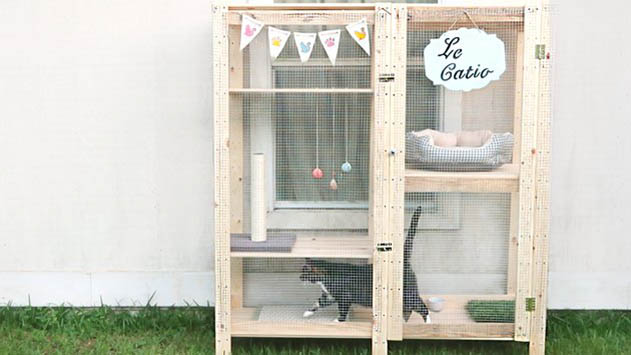
| Skill Level: | Medium |
- 2 IKEA Kallax bookcases
- 4 wooden boards (30 x 15 inches)
- Wire mesh
- Hinges
- Screws
- Cat door
- Cushions
- Toys
- Bowls
- Tape measure
- Saw
- Drill
- Staple gun
This DIY catio is a clever and easy way to repurpose IKEA furniture into a cozy, stylish cat enclosure. It uses two IKEA Kallax bookcases as the base and frame of the catio and adds wooden boards, wire mesh, and hinges to create the walls and roof.
The catio has four compartments, each with a different theme—a lounge area, a play area, a nap area, and a snack area. Of course, you can adjust the themes as you’d like. The catio can be attached to a window with a cat door for easy access.
8. Catio With PVC Pipes
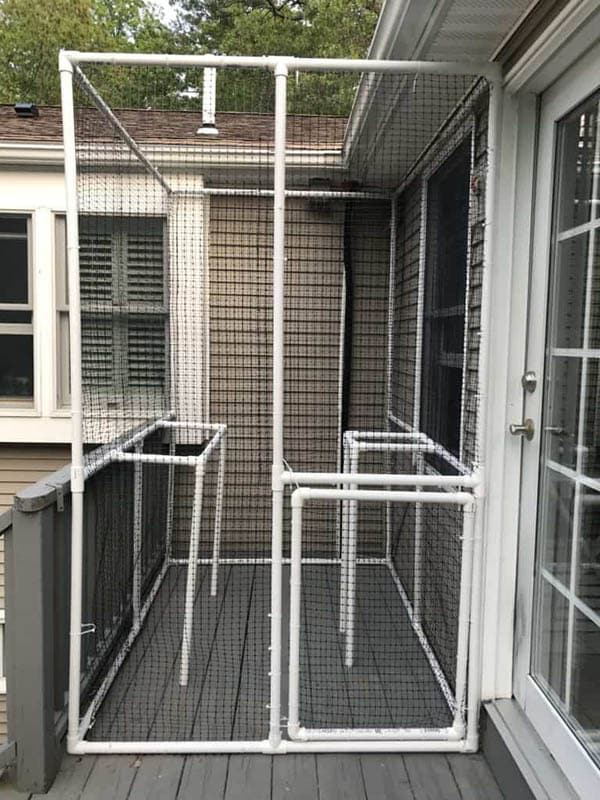
| Skill Level: | Beginner |
- PVC pipes of various lengths
- PVC connectors
- Netting
- Zip ties
- Screws
- Wood or metal for the roof
- Carpet scraps
- Cat toys
- PVC pipe cutter
- Measuring tape
- Marker
- Scissors
PVC pipe is one of the easiest materials to work with, and building a catio out of PVC pipes is pretty straightforward, even for someone with few DIY skills. This catio primarily uses PVC pipes and netting for the bulk of the construction.
Despite being made of PVC, this catio is pretty strong and made to withstand tough weather. It can be easily moved and stored as necessary.
9. Tee Diddly Dee Outdoor Catio
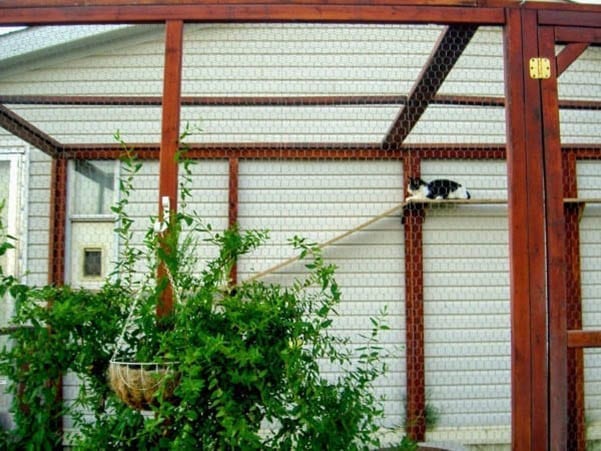
| Skill Level: | Medium |
- 2 x 3 lumber
- Chicken wire
- 3-inch screws
- Several 1 x 6 pieces of lumber
- Hinges
- Latch
- Scrap plywood
- Railroad ties
- Tree branches
- Cat door
- Chop saw
- Skill saw
- Hand drill
- Staple gun
- Compressor (for the staple gun)
- Tape measure
- Level
- Hammer
- Wire cutters
This outdoor catio provides a fenced-in area for your cat to get fresh air and sunshine. You can attach it to the side of your house or have it stand alone in your yard. While this plan is very detailed, you could easily customize it with different shelves, toys, tunnels, and other fun activities.
This enclosure is very large, which means it also requires more work. However, it leaves you with a pretty professional-looking catio.
10. Our Tiny Homestead Catio
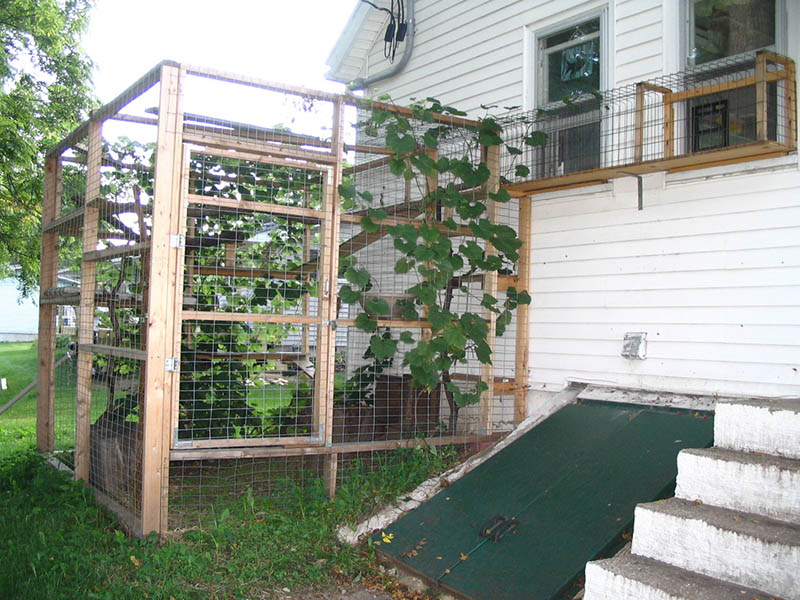
| Skill Level: | Medium |
- Lumber of several sizes
- Screws
- Chicken wire
- Railroad ties
- Plywood
- Hinges
- Latch
- Cat door
- Pea gravel
- Tree branches
- Chop saw
- Skill saw
- Drill, Staple gun
- Tape measure
- Level
- Hammer
- Wire cutters
For those looking for a large, sturdy catio design, this one by Our Tiny Homestead may be ideal. It’s made of wood and wire fencing to keep your cat secure and connects directly to a window. So, to give your cats access, all you do is open the window up. There are several shelves, ramps, and branches for cats to climb.
This catio is rather large and designed to accommodate several cats. You can adjust the plan to fit your needs.
11. Fundamentally Feline Catio Haven
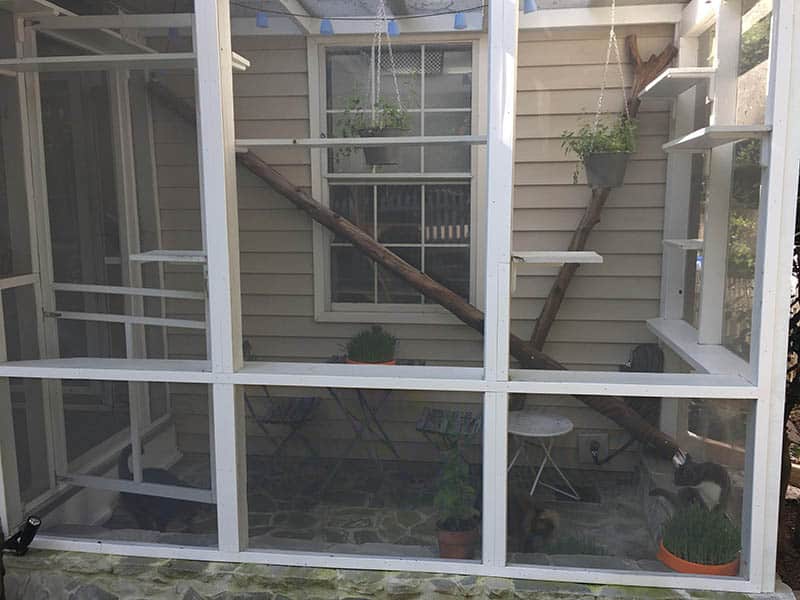
| Skill Level: | Advanced |
- Wood (2x4s, 2x2s, 1x2s, etc.)
- Wire mesh or chicken wire
- Screws
- Hinges
- Latch
- Paint or stain
- Cat fencing (optional)
- Plants (optional)
- Saw
- Drill
- Staple gun
- Wire cutters
- Tape measure
- Level
- Hammer
This plan includes several options to build a catio. It isn’t a step-by-step plan like the others, but it provides many customization options. Therefore, it’s great if you’re working with a unique space or want to ensure you’re building the correct catio for your feline.
There are several pictures of the author building their catio, as well as information about why they chose what they did. However, it would be very easy to adjust the plan to fit your needs at any point.
12. DIY in PDX Slim Outdoor Catio
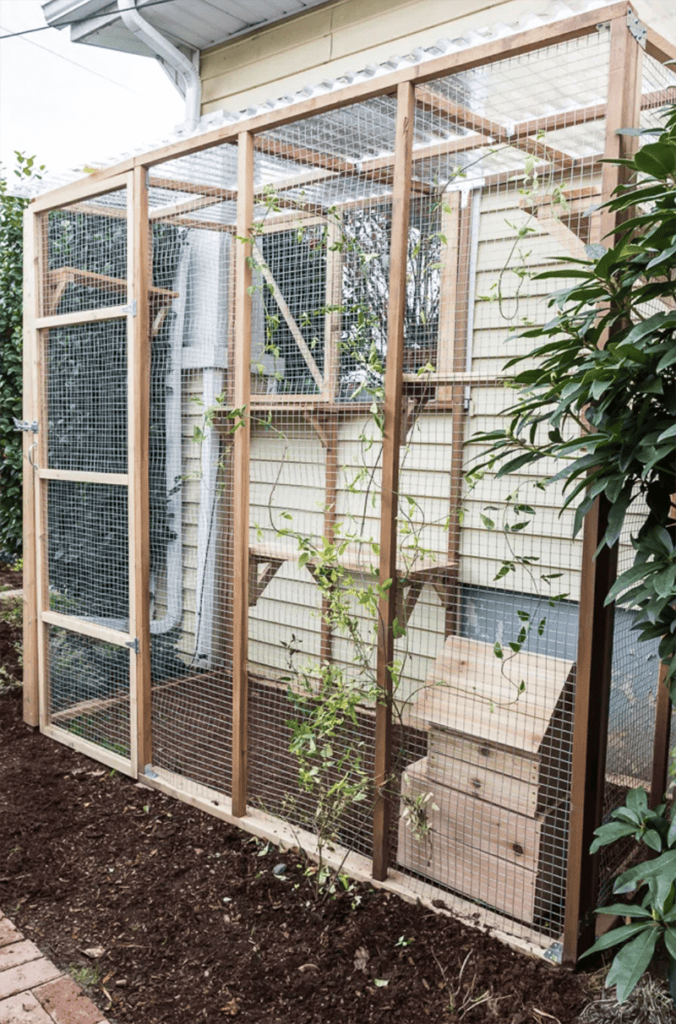
| Skill Level: | Advanced |
- Various cuts of wood
- ¼ inch hardware cloth
- Galvanized staples
- Screws
- Hinges
- Latch
- Paint or stain
- Mulch
- Plants (optional)
- Saw
- Drill
- Staple Gun
- Wire cutters
- Tape measure
- Level
- Hammer
This plan creates a tall, slim catio that would work well in a smaller yard. It utilizes a small cat door built into the house to allow the cats access to the enclosure. You can also build it up against a porch so that you can spend time with your felines whenever they’re outside.
The primary materials used are cedar and corrugated roofing. However, you could adjust the plan to match whatever you have on hand.
13. Chirpycats Catio with Tunnel
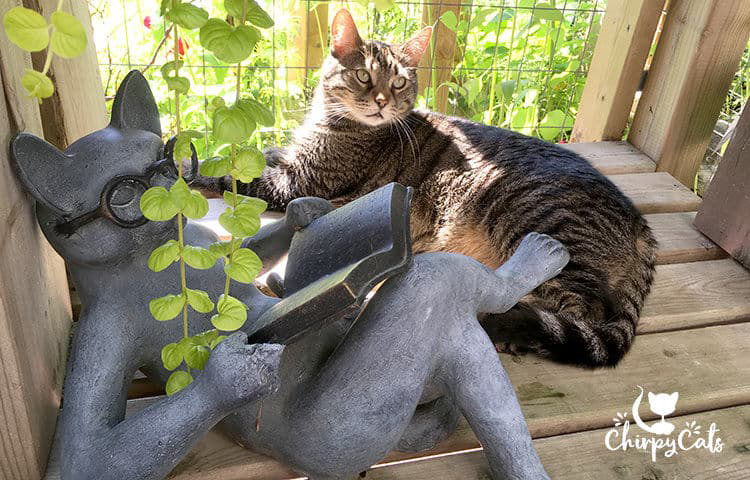
| Skill Level: | Advanced |
- Pressure-treated wood
- Galvanized steel wire
- Hex wire netting
- Flooring (optional)
- Depends on your plan
This interesting DIY catio plan includes tips for building and designing a catio. All of the tips on how to build a catio will provide you with several options to choose from. While this allows you to customize your catio, it may leave you with some decision fatigue. Therefore, this plan is probably best for those who already know what they want their catio to look like.
The plan utilizes red patio brick pavers, hex wire netting, and pressure-treated wood. However, you could use a range of different materials.
14. I Am the Maven Catio
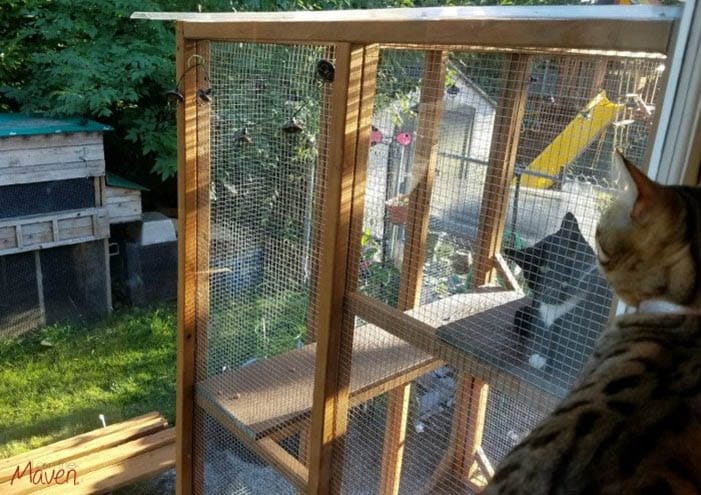
| Skill Level: | Advanced |
- Wood
- Mesh of some kind
- Screws
- Hinges
- Latch
- Cat fencing
- Plants
- Saw
- Drill
- Staple gun
- Wire cutters
- Tape measure
- Level
- Hammer
This DIY catio is similar to the other plans we’ve listed. However, there are several excellent tips in this article. We recommend reading them even if you aren’t using the exact plan. However, the directions are a bit vague. They don’t provide you with a step-by-step outline like most of the plans on this list.
15. Customizable Catio by Floppy Cats
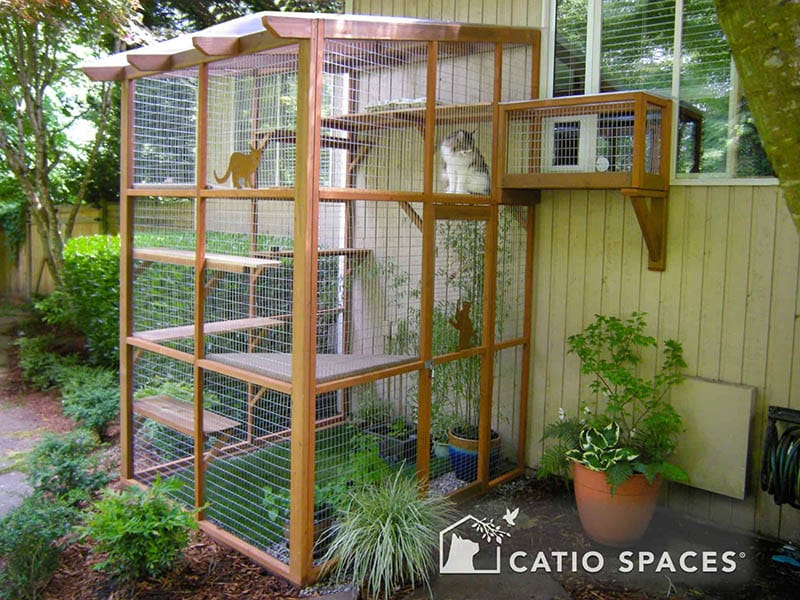
| Skill Level: | Advanced |
- Wood of various lengths
- Wire mesh
- Screws
- Hinges
- Latch
- Saw
- Drill
- Staple gun
- Wire cutters
- Tape measure
- Hammer
Similar to the previous plan, this one is more of a guide than a plan. However, it suggests which items to purchase and some options you may not have considered. In the end, someone with DIY skills could turn this into a plan in itself.
This project provides plenty of room for customization. You can choose the wood and design that you like while following their tips and guide. However, the lack of a clear step-by-step plan may make it harder for those with few DIY skills to follow.

Conclusion
Hopefully, you enjoyed our round-up and found some designs to guide you on making a DIY catio. Some of these free catio plans are also great to use as feral cat house plans, but we’d recommend making them freestanding and placing them further away from your house.
Even if you’re new at DIY there are simple plans that will teach you how to build an outdoor cat enclosure. If you are a pro, there are some larger projects that will keep you occupied for longer!
Whichever you choose, your cat is sure to be grateful for their new catio—even if they show their thanks by falling asleep!
Featured Image Credit: SariMe, Shutterstock
